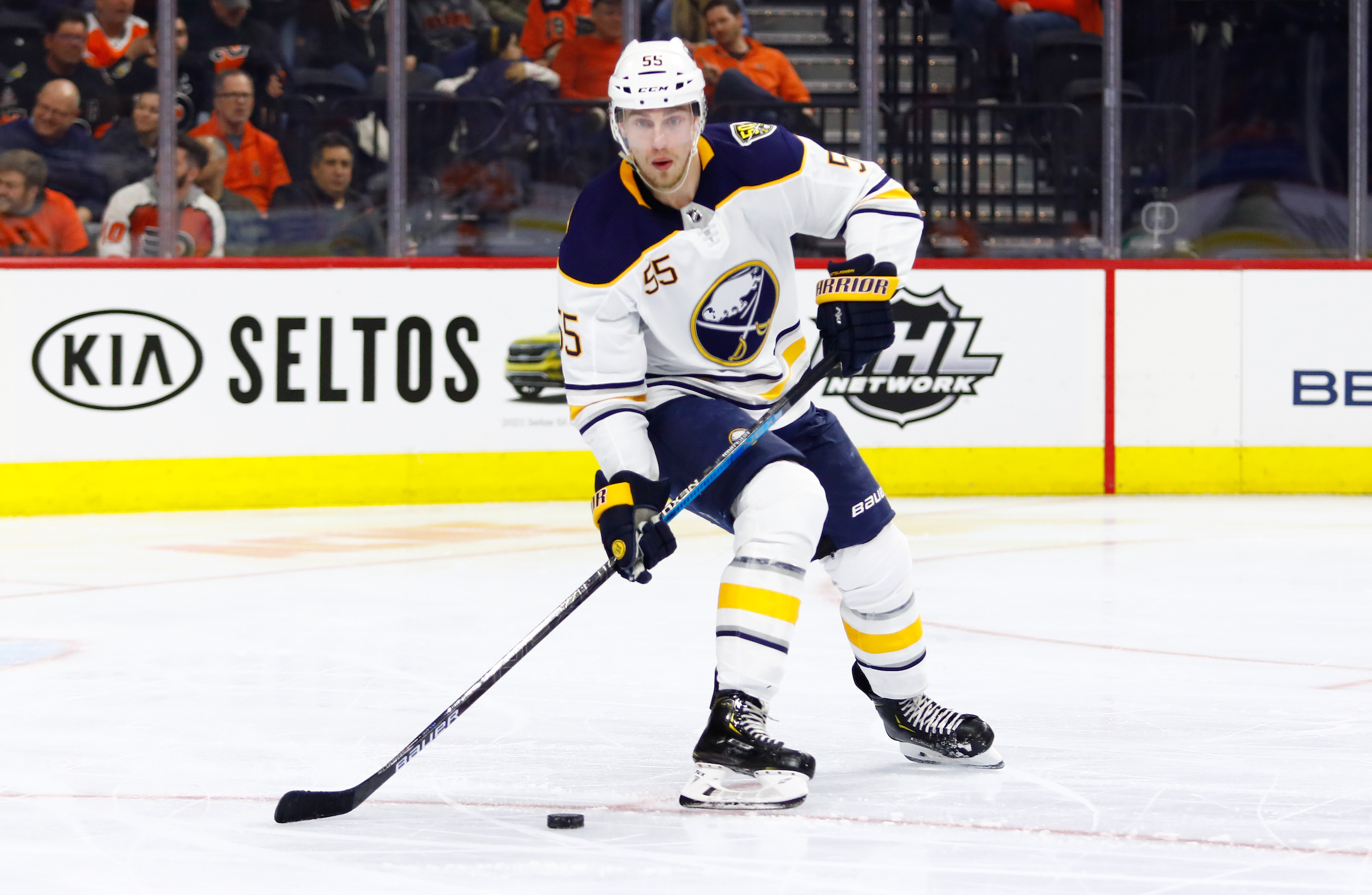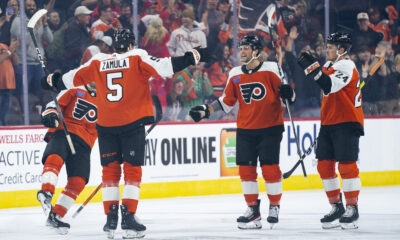Philadelphia Flyers
Gilbert: Flyers pay steep price to plug a hole with Rasmus Ristolainen

Chuck Fletcher continued his active week on Friday afternoon. It’s been a very busy seven days for the Philadelphia Flyers general manager. On Saturday, he got things started by trading for Ryan Ellis. After losing Carsen Twarynski in the Expansion Draft, he traded Shayne Gostisbehere to clear cap space on Thursday. Now, on Friday, he added another right-handed defenseman in Rasmus Ristolainen. But he paid a pretty steep price to do so.
Ristolainen is already a polarizing player. He is a big defenseman standing at 6’4″, 218 lbs. He does everything that the prototypical defensive defenseman does: he blocks shots, is physical, and is on the ice for a lot of goals against. That last part is key. Ristolainen may make the Flyers a more physical team that is “tougher to play against,” but he may not make the Flyers that much better.
Before I get too deep into the weeds here, let me clarify that I do believe Ristolainen is a better defenseman than Robert Hagg. He’s proved that throughout his career as a top-four defenseman (mostly top-pair) for the Sabres. Hagg, on the other hand, has toiled as a third-pair guy that should be the seventh.
Rasmus Ristolainen is also a better fit than Hagg. He can slide in on the right side behind Ryan Ellis in the Flyers’ lineup. With Ellis paired with Ivan Provorov, Ristolainen will likely join Travis Sanheim on the second pair. That moves Justin Braun down to a better role for him on the third pair where Cameron York could join him. But let’s get back to Ristolainen.
In his eight-year career, Ristolainen has 1,355 hits and 848 blocked shots in 542 games. That’s a lot of hits. He also has 287 giveaways and 127 takeaways, which isn’t too great.
The main problem with Ristolainen are his play-driving numbers, or “analytics,” as people like to harp on. Sure, they can’t tell the whole story, but they paint a pretty good picture.
The Sabres were outscored 427 to 301 at 5-on-5 play with Ristolainen on the ice in his career. I don’t care how bad a team is, getting outscored by 126 goals in 542 games speaks volumes. According to Evolving Hockey, Ristolainen has a 41.11% Goals For, 44.29% Shots For, and 44.17% Expected Goals For in his career.
Luckily, there is also a stat that shows how many goals a team scores (and allows) with or without a player on the ice.
Relative to his teammates, Ristolainen has a -0.19 goal differential per 60 minutes. Every 300 minutes he plays, his team is one goal worse at 5-on-5 play. That has gotten a bit better in recent years after -0.24, -0.31, and -0.22 in his first three seasons. Inthe 2019-20 season, Ristolainen was a +0.09 in that category. Last season, however, he was a near-career-worst -0.5 (career-worst is -0.59 in 2018-19).
Simply put, Ristolainen did not help the Sabres win many games in his career. In fact, he hurt them most of the time. Despite his physicality and how hard it may be to play against him, the Sabres were better off with him on the bench.
Upgrading from Hagg to Ristolainen would’ve been a fine move. The issue is with the draft picks involved. A first-round pick and second-round pick is a lot; Hagg and a third would be a different story.
Chuck Fletcher paid a very steep price for Ristolainen. This year’s draft may be weirder than most, but the 13th overall pick is still valuable. It should be more valuable than a defenseman like Ristolainen.
Now, having said all that, a change of scenery may do wonders for Ristolainen. He has played on some pretty abysmal Sabres teams throughout his career and has yet to play in the playoffs. He was drafted in 2013 and got immediately thrown into the fire.
Rasmus Ristolainen played 19:07 per game in his age-19 season, 20:37 in his age-20 season, and 25:17 in his age-21 season. The kid never had a chance to develop in juniors after getting drafted and perhaps that impacted his progression.
In his career, Ristolainen was a top-pair defenseman with the Sabres. He’s averaged 23:53 per game over eight seasons –– down in the 22-minute range over the past two years.
Chuck Fletcher checked another box off with the Ristolainen trade. That’s the good part. The bad part is the price he had to pay to do so.
The Flyers’ first-round pick this year was destined to be traded. Fletcher is in full win-now mode after last year’s disappointment. However, he likely could’ve gotten a better return than Ristolainen.
From the Sabres alone, Fletcher may have been able to send a similar package with the first-round pick for Sam Reinhart. They probably would’ve had to give up a prospect instead of Hagg, but it would’ve been worth it. Giving up the 13th overall pick –– and a second-round pick next year –– is a lot for a guy like Ristolainen.
We’ll see how the rest of the offseason plays out and how Rasmus Ristolainen fits in Philadelphia. Hopefully, he can turn things around and be a positive presence in front of Carter Hart.




















